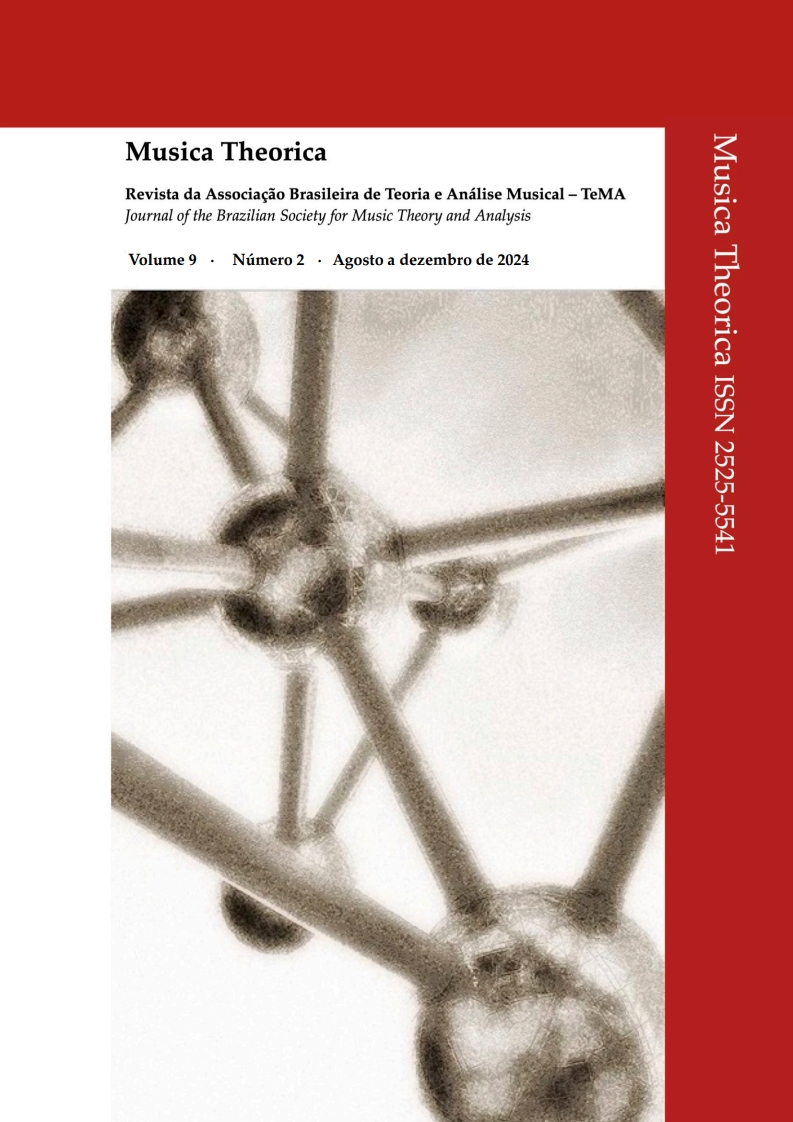Exploring Harmonic Ambiguities Through Compositional Commentary
A Study on Scriabin’s Masque
DOI:
https://doi.org/10.52930/mt.v9i2.316Abstract
In a recent publication, we have presented an analytical procedure aimed at recognizing and disclosing latent tonal-functional relationships (both local and large-scale ones) within works generally considered to be post-tonal or borderline of an extended tonality. Poetically and methodologically grounded on the practice of compositional commentary – an idea originated within the work of Luciano Berio and which we have been developing in previous works –, such procedure consists, basically, in adding to the analyzed work (which remains otherwise intact) a melodic line that performs, in each dissonant harmonic formation, preparations and resolutions intended to demonstrate how such formation could have occurred within a pre-1908 tonality (i.e., prior to a generalized emancipation of the dissonance). Assuming that, from a tonal-functional perspective, the repertoire in which we are interested is inherently ambiguous; and having previously recognized that the interpretations evinced by our added lines are not – and cannot – be univocal; we aim, in this work, to explore different manners through which we can assimilate into the compositional commentaries we produce – and not only on a verbal and hypothetical level – the ambiguities that we recognize during the analytical process. With this objective in mind, we take as an object of analysis Scriabin’s miniature for piano entitled Masque, Op. 63/1 (1912), which is, to a good extent, structured on a play of harmonic ambiguities. In the commentary we have produced on such work (fully reproduced at the end of this article), not only do we disclose local and large-scale functional relationships latent in Masque, but, fulfilling our main aim, we demonstrate at least five different manners through which our analytical procedure can contemplate and bring to light harmonic ambiguities in the pieces we in due course assume as objects of analysis.


